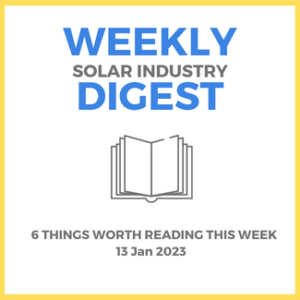According to American Clean Power, the impact of the Inflation Reduction Act on manufacturing has been profound. From Sept-Nov 2022 there were announcements for 20 new clean energy manufacturing facilities or facility expansions, 12 of which are for solar. This represents a 300% increase in American solar module manufacturing capacity.
Okra Finance CEO reiterates his commitment to solving C&I financing problems for installers. This article digs into exactly how he has been pursuing this goal. Four pillars he has been banking on when building the ideal company are a motivating team culture, a fast and unbiased technology platform, strong contractor relationships and trusted capital sources.
Given that P-type PERC solar cells are nearing their efficiency limits, Trina Solar has begun production of i-TOPCon cells for its Vetex N modules. Power output will be up to 605 W with efficiency that reaches 22.4%. Module capacity of Trina Solar’s 210mm n-type technology is expected to reach 30 GW this year.
PV Mag does a good job of rolling out three important industry trends to watch in 2023: the long term repercussions of NEW 3.0 in CA around chasing policy in the various states, the #InflationReductionAct rollout, and the future of module supplies in America and how policy will impact them.
IHS Markit has identified 4 market trends from last year around solar and storage: 1) DG continues to demonstrate strong resilience through the pandemic and a tough, high-cost environment, 2) renewables are growing despite capex increases, 3) supply chain woes, trade barriers, and geopolitics have pushed PV manufacturing closer to the end-user, and 4) energy storage system costs went up.
Greenwich Renewables and Unirac joined forces for a webinar called “The Right Attachment for Your Application.” They provide an overview of the various attachment types on the market, look at preferred install methods and regional considerations, and walk through demos of different install scenarios. The video is below.
